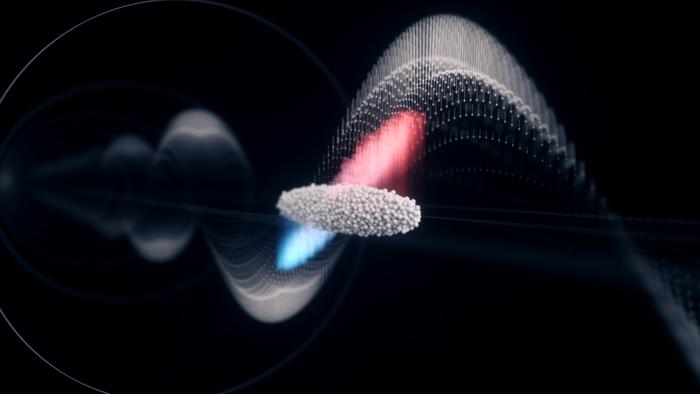Scientists at DESY have made significant strides in advancing laser plasma acceleration technology, a paradigm shift that could revolutionize the field of electron acceleration. Traditional accelerators, which rely on expansive and costly radio-wave systems housed within resonator cavities, are quickly becoming outdated. The new approach harnesses the power of intense laser pulses to generate electron bunches with unprecedented properties, which could open new avenues in scientific research, industrial applications, and medical technology.
The DESY research team, focusing on the LUX experiment, aimed to address a key limitation in current plasma-driven electron beam technology. While laser plasma acceleration shows great promise for creating compact and efficient electron accelerators, previous iterations produced electron bunches that were inconsistent and difficult to control. The primary challenge lay in achieving uniformity in the electron bunches, a requirement for practical applications in both research and industry.
In a pioneering effort, the researchers developed a sophisticated correction system to enhance the quality of the electron bunches generated by their laser plasma accelerator. By introducing a two-stage correction mechanism, they managed to significantly refine the properties of the particles produced during the acceleration process. The team discovered that sending the electron bunches through a carefully constructed magnetic chicane could effectively sort the accelerated particles by their energy levels.
The method involved utilizing four deflecting magnets configured to create a detour for the electron bunches. As these particles navigated the magnetic chicane, their temporal characteristics changed. The higher-energy electrons were pushed to the front of the pulse, while the lower-energy electrons settled at the back. This innovative approach allowed the team to stretch and reorder the pulses, setting the stage for optimal acceleration techniques to be applied downstream.
Once the bunches were sorted, researchers directed them into an accelerator module closely resembling those used in conventional radiofrequency systems. Within this module, the electron bunches were subjected to controlled deceleration and acceleration processes. By meticulously timing the arrival of the electron beam to align with the radio frequency of the resonator, the researchers were able to compress the energy distribution among the electron bunches, leading to a remarkable improvement in the uniformity of the particles.
The DESY team reported substantial reductions in the energy spread of the electron bunches, which decreased by a factor of 18, and a staggering 72-fold reduction in the fluctuations of the central energy values. Impressively, both metrics fell below one permille, bringing the laser-plasma-produced electrons on par with their conventionally accelerated counterparts. This breakthrough not only showcases the potential of laser plasma technology but also elevates its credibility as a viable alternative to traditional methods.
The collaborative effort between different research divisions at DESY proved instrumental in the success of this project. A synthesis of theoretical insights and practical applications allowed the team to implement concepts that had previously been established in laboratory settings. The quick transition from theory to experimental application also emphasized the adaptability and versatility of the components used, many of which were drawn from existing DESY facilities.
Additional validation of the system came swiftly; on their very first day of operation, the team witnessed promising results. After a brief period of fine-tuning, the correction system’s effectiveness became apparent, boosting confidence in the feasibility of future applications for laser plasma acceleration technology.
The implications of these findings are widespread, with researchers already envisioning specific applications for the technology. For example, the potential use of the refined electron bunches in X-ray sources, such as the PETRA III accelerator, has emerged as an exciting possibility. Until now, electron injection into such advanced facilities relied on larger and more cumbersome conventional accelerators, which were both energy and cost-intensive.
By employing the refined laser-plasma acceleration method, the DESY team is on course to enable a more efficient means of producing and injecting electrons into high-energy X-ray sources. This not only demonstrates the flexibility of laser-plasma technology but also signifies a critical step toward more compact, economical particle acceleration solutions. However, researchers acknowledge that further advancements are needed in both laser technology and continuous operation capabilities before fully realizing the potential applications of plasma accelerators.
As the project continues, scientists remain focused on refining the laser systems themselves, improving energy output consistency, and striving for continuous operational frameworks. While many challenges lie ahead, the collaborative spirit and innovative approaches taken by the DESY team highlight the significant progress made in laser plasma acceleration. This groundbreaking work suggests a promising future for electron beam technology, suggesting that the convergence of traditional and novel methods could lead to revolutionizing the field.
The research marked in the journal Nature underscores the potential for laser-plasma technology to address limitations faced by traditional accelerator designs. The emerging findings not only inspire renewed confidence amongst the scientific community but also hint at an evolving landscape of particle physics that could redefine how researchers explore and utilize high-energy physics principles. As this exciting technology continues to advance, its journey from the laboratory to real-world application may very well transform industries beyond scientific research, ultimately improving various aspects of daily life.
As laser plasma acceleration becomes increasingly viable, the pursuit of collaboration and innovation stands at the forefront of this technological evolution. The DESY team’s achievements serve as a testament to the extraordinary possibilities that arise when scientific ingenuity and collaboration converge to address complex challenges in high-energy physics.
The future of electron acceleration is bright, and with sustained research and development, it holds the promise to alter the fabric of how particle acceleration is perceived and utilized across diverse sectors. As trailing waves of advancements ripple through the field, one can only ponder the emerging discoveries that await us on the horizon.
Subject of Research:
Article Title: Active energy compression of a laser-plasma electron beam
News Publication Date: 9-Apr-2025
Web References: http://dx.doi.org/10.1038/s41586-025-08772-y
References: Nature
Image Credits: Science Communication Lab for DESY
Keywords
Laser plasma acceleration, electron bunches, electron acceleration, DESY, firmware, particle physics, synchrotron, technology, innovation, compact accelerators.




